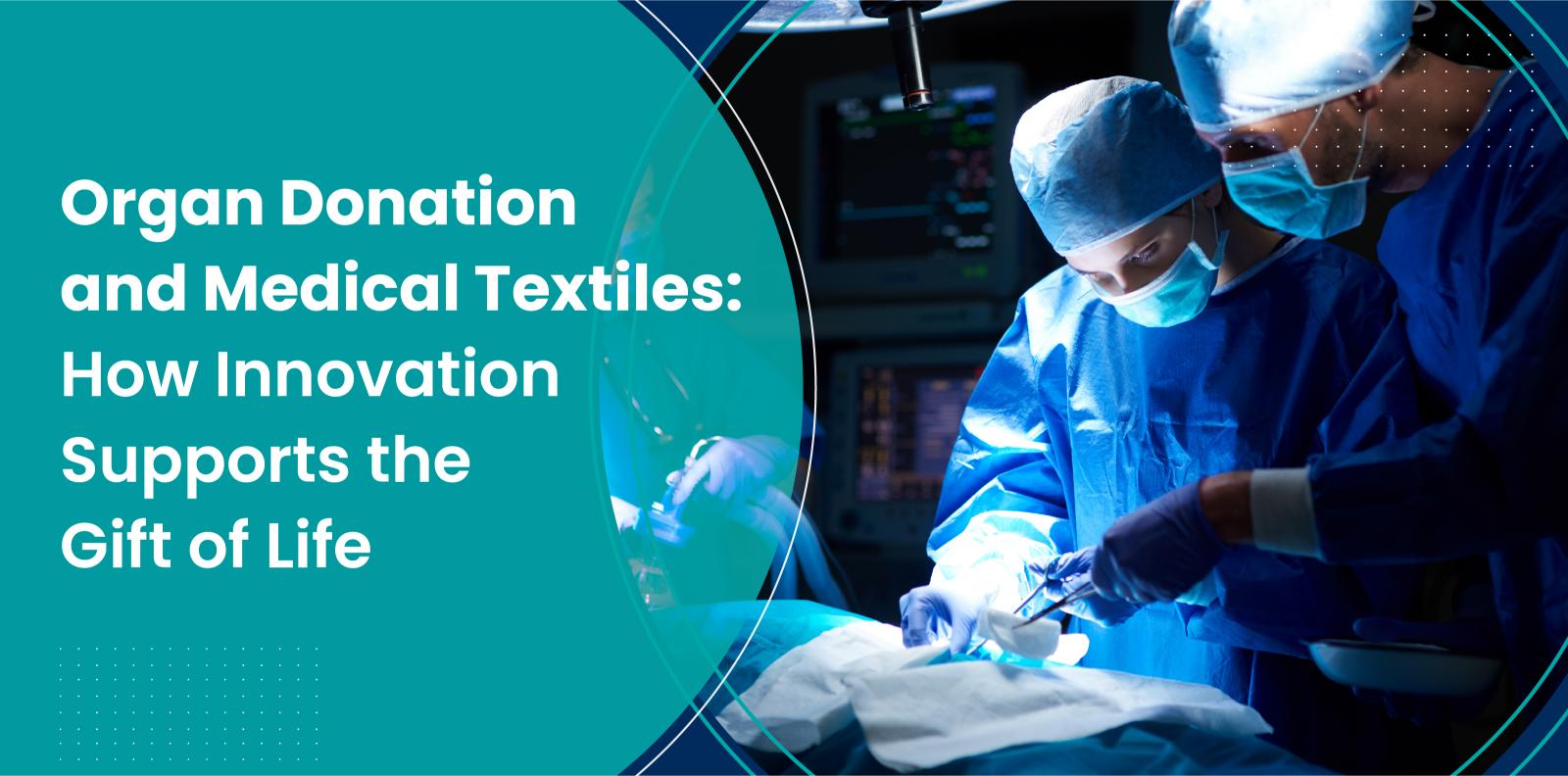
Organ donation is said to be the greatest gift of all. One organ donor has the potential to save many lives, making it a selfless act. Numerous medical specialists utilize accuracy, expertise, and cutting-edge equipment to ensure the success of organ transplants from the time a donor is identified until the procedure is completed. Medical textiles are an important but frequently overlooked component of this procedure.
For transplant patients, the fight for recovery doesn’t end in the operating room; it continues through every stage of care. One of the most overlooked threats in this journey is secondary infection,1,2 the contaminated hospital linens, can be a hidden source of harmful pathogens,3,4 may lead to severe complications, including fatalities. It goes without saying how important the prevention of infection is during a critical procedure such as a transplant.
That’s the reason operating rooms must include antimicrobial textiles such as medical scrubs, lab coats, gowns, head covers, patient dress, linens and curtains is to actively kill the pathogens and reduce cross-contamination, thereby reducing hospital-acquired infections risks.5
Modern smart textiles, such as the ones made by Thermaissance, go beyond traditional protection, integrating nanotechnology to create antifungal, antibacterial, and antiviral surfaces that resist gram-positive and gram-negative bacteria, viruses, fungi as well as multidrug-resistant organisms. It is also recognized as a Class I Medical Device by the Therapeutic Goods Administration (Australian Government, Department of Health) for its role in bioburden reduction.
These precision-engineered fabrics are designed for long-lasting performance, combining durable protection with breathable and temperature regulating medical fabrics for comfort.
In a cross-over trial conducted by the Mazumdar Shaw Medical Foundation (ICMR-approved, NABL-accredited BSL-3 facility):6
Bacterial & Fungal Load Reduction: Thermaissance fabrics showed a statistically significant decrease (p<0.05) compared to standard textiles.
Zero Viral Load: Thermaissance fabrics showed complete inhibition of viral growth.
These results confirm the antimicrobial effectiveness of Thermaissance fabrics in healthcare and other high-risk environments.
With such healthcare clothing and patient wear solutions, Thermaissance is pushing boundaries. These advancements, especially in critical procedures like organ transplants, play an important role in hospital infection control.
Every successful organ donation depends on the donor’s contribution, the surgical team’s skill, and the support of modern equipment. These antimicrobial textiles make a subtle but important contribution to hospital infection management, particularly in intricate procedures like organ transplants.
References:
1.Haritha H, Kishan A, Mythri S, et al. POS-094 INFECTIONS IN KIDNEY TRANSPLANT RECIPIENTS :SINGLE CENTER EXPERIENCE FROM TERTIARY CARE CENTER IN SOUTH INDIA. Kidney International Reports. 2022;7(9):S508. doi:https://doi.org/10.1016/j.ekir.2022.07.112
2. Kritikos A, Manuel O. Bloodstream infections after solid-organ transplantation. Virulence. 2016;7(3):329-340. doi:10.1080/21505594.2016.1139279
3. Sundermann AJ, Clancy CJ, Pasculle AW, et al. How Clean Is the Linen at My Hospital? The Mucorales on Unclean Linen Discovery Study of Large United States Transplant and Cancer Centers. Clin Infect Dis. 2019;68(5):850-853. doi:10.1093/cid/ciy669
4. Fijan S, Turk SŠ. Hospital textiles, are they a possible vehicle for healthcare-associated infections?. Int J Environ Res Public Health. 2012;9(9):3330-3343. Published 2012 Sep 14. doi:10.3390/ijerph9093330
5. Orasugh JT, Lesego Tabea Temane, Pillai SK, Ray SS. Advancements in Antimicrobial Textiles: Fabrication, Mechanisms of Action, and Applications. ACS Omega. Published online March 28, 2025. doi:https://doi.org/10.1021/acsomega.4c11356
6.Cross-over trial conducted at Mazumdar Shaw Medical Foundation (ICMR-approved, NABL-accredited BSL-3 facility). Internal data, unpublished.
(Need more details for quoting this study)
Query Resolutions:
1. The need for antimicrobial textiles in transplant care should come out clearly – there are studies linking secondary infections in transplant patients due to contaminated linens and resulting fatalities. Every organ donated represents a priceless opportunity—yet this opportunity can be lost if infections undermine recovery. Highlight how infection can result in transplant failure. Ensuring that each organ donated translates into a successful, long-term transplant outcome requires infection prevention measures at every stage of patient care. Medical textiles are an important but frequently overlooked component of this process.. – Done
2. Also, please highlight CE Class I Medical Device recognition for Thermaissance Textiles for its role in bioburden reduction. – Done
3. Also the last line, around textile engineering should be removed. – Done
4. Thermaissance textiles are not eco-friendly – please remove those. – It was mentioned in one of your brochures, but we have removed it as per your suggestion.
5. In the references, what is the relevance for quoting this article?
1.Orasugh JT, Lesego Tabea Temane, Pillai SK, Ray SS. Advancements in Antimicrobial
Textiles: Fabrication, Mechanisms of Action, and Applications. ACS Omega. Published onlineMarch 28, 2025. doi:https://doi.org/10.1021/acsomega.4c11356 – To establish the fact how antmicrobial textiles helps in preventing HAIs
Recent Posts
-
30 Oct 2025 ThermaissanceDefeating Neonatal Hypothermia: How the Thermaissance Baby Hugg Revolutionizes Thermal Management for Preterm Infants
-
28 Oct 2025 ThermaissanceWhy Contaminated Linen is the Most Underestimated Threat in the Fight Against Hospital Acquired Infections
-
09 Aug 2022 ThermaissanceWhy UV Protective Clothing is a Must
